serving hattiesburg and the surrounding area.
(columbia, petal, purvis, sumrall, laurel, USM, jcjc, jones county, lamar county, forrest county)
whirlpool oven control board repair, damaged relays
a local appliance repair place contacted me about a 2016 whirlpool range oven (stove) that they were working on. the heating element was not longer heating. it was a whirlpool and the model number was listed as WFE550S0HZ1. also on the tag was W11121311A. he had believed the problem to be pointing to the control board. the identifying information on the board is W10813832 and W11204529. it is listed as #2 in this whirlpool diagram. a replacement board is currently priced at around ~$280. the new part number is W11295998 and replaces part #’s W11050785, W11182815, W11204529.
i look over the board carefully before willy nilly just ordering some parts to throw at it and hope it’s the right solution. that can result in a lot of unnecessary work. i noticed something that looked broken.
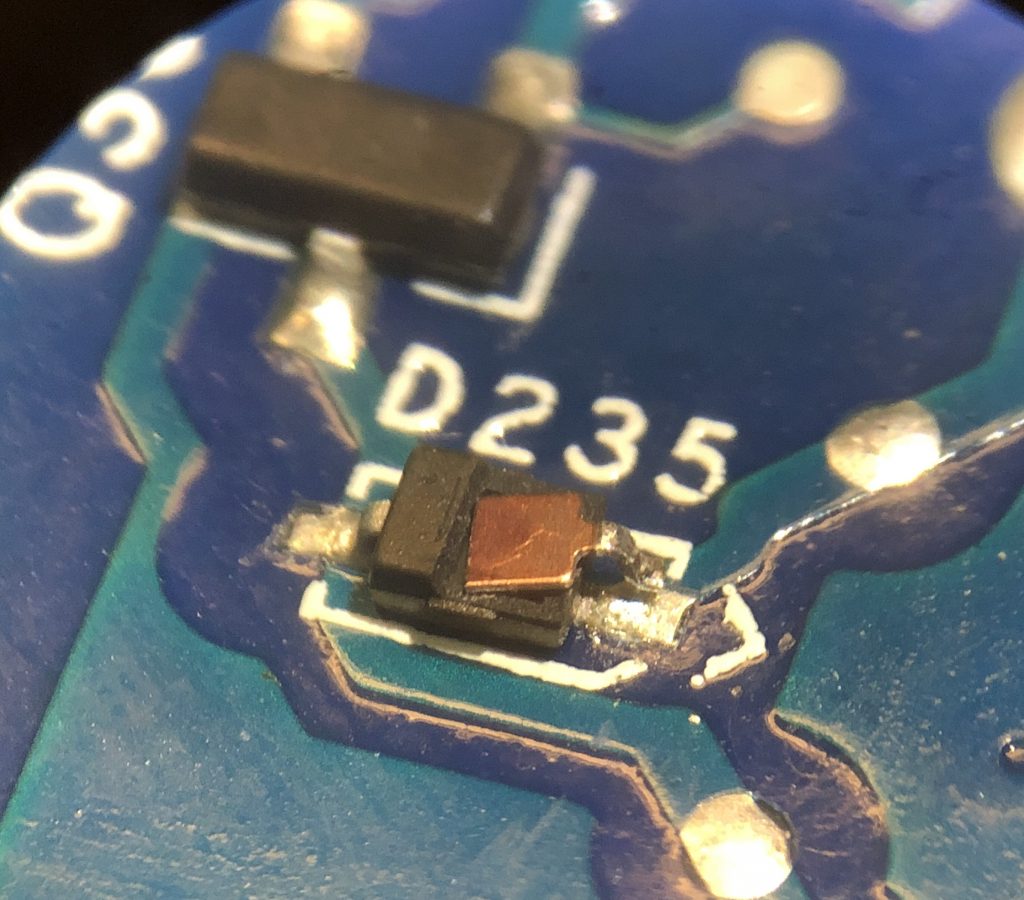
it was a T4 diode. after looking closer and doing some measurments i found it to be a SOD323 package size approximately 1.8mm by 1.2mm apparently there is a range above and below that for that package – see the datasheet. and believe it to be a high speed switching diode 1N4148WXL-TP.
the diode is mounted with the cathode side away from the nearby mosfet. it’s the same with the other two relays, so if you have one fully blown, take a look at the trace near the other 2 and do the same for the other.
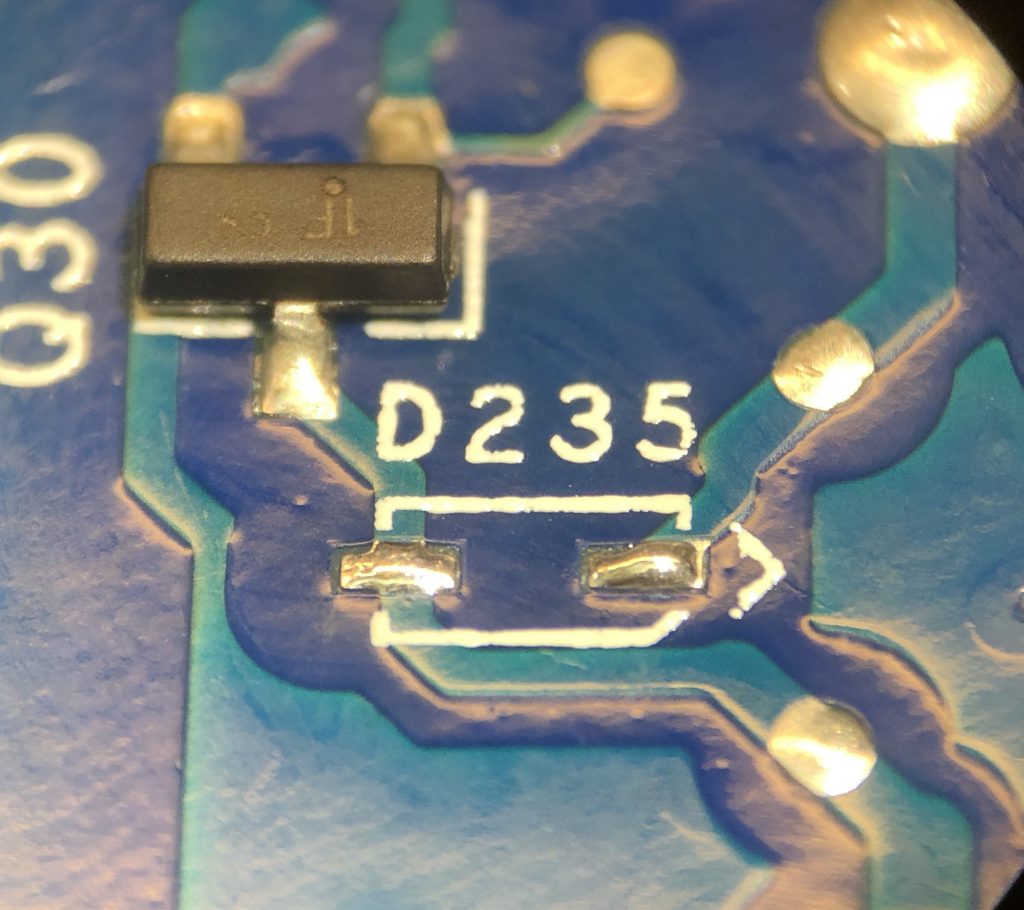

when trying to diagnose the problem, the guy who gave me a call said that he noticed a rattle when he shook the board. now i normally don’t work with relays and didn’t know what the sound of a good relay makes versus a blown relay. after pulling the relays i made a comparison video.
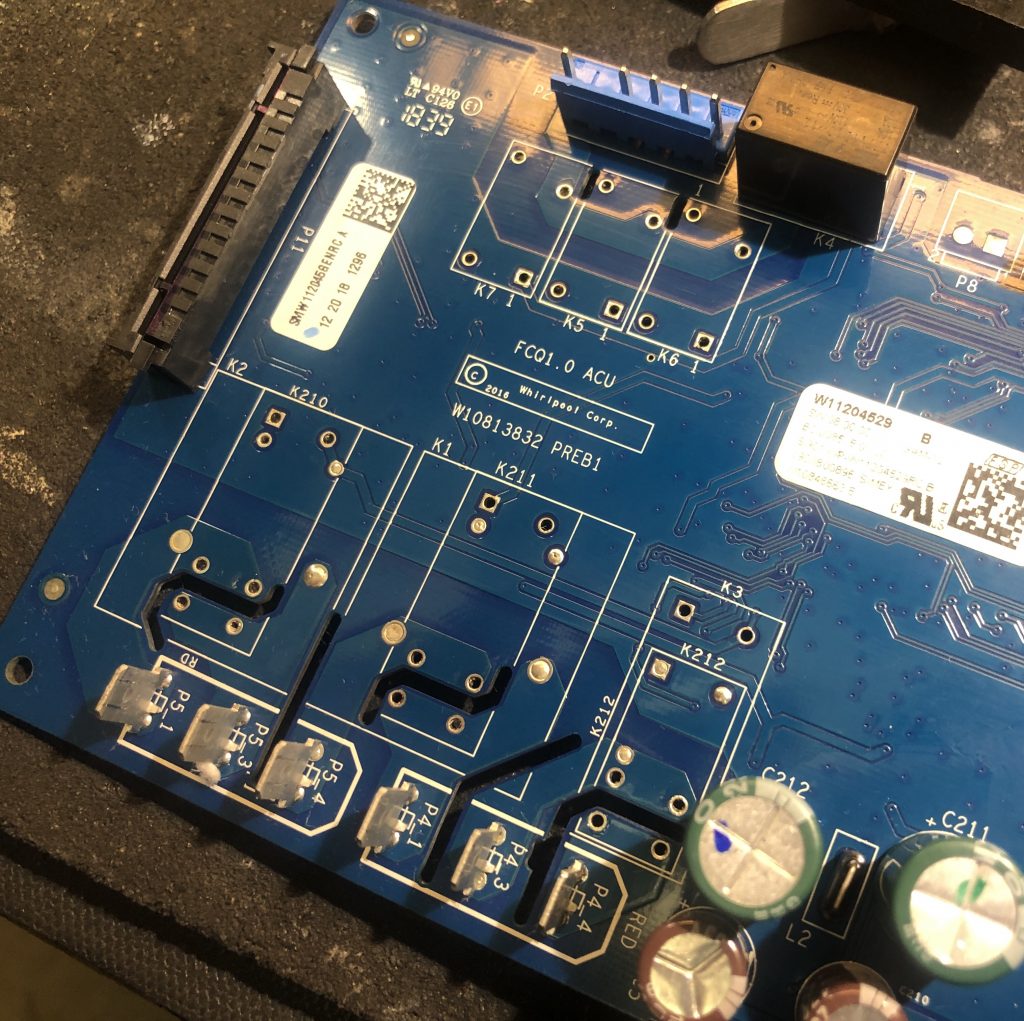
i think it’s important to be able to tell the difference in the sound of a normal sound a good relay makes versus the sound of a blown relay. click on the video below to hear the difference.
what you are actually hearing inside are bits of molten metal. blown relay comparison – relays rattle, but a blown relay sounds different. reason is the relay ends melt from the power surge forming some small metal balls and sound like a tiny baby rattle instead of a normal relay sound.
lets look inside…

that was some sort of electrical spike!
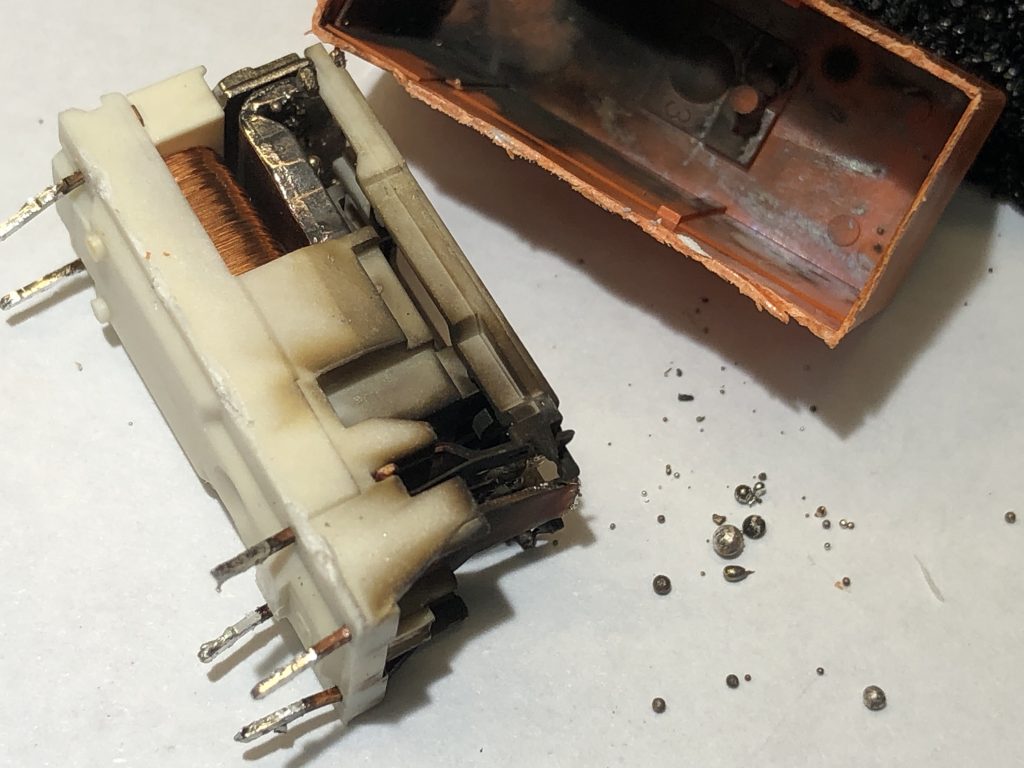
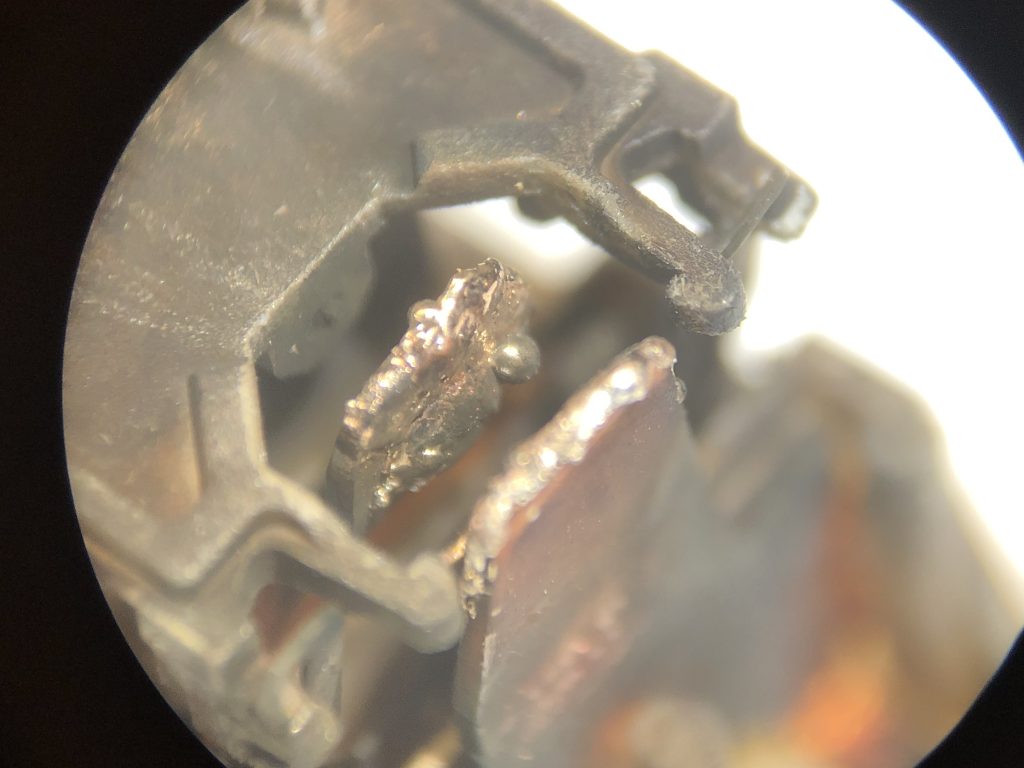
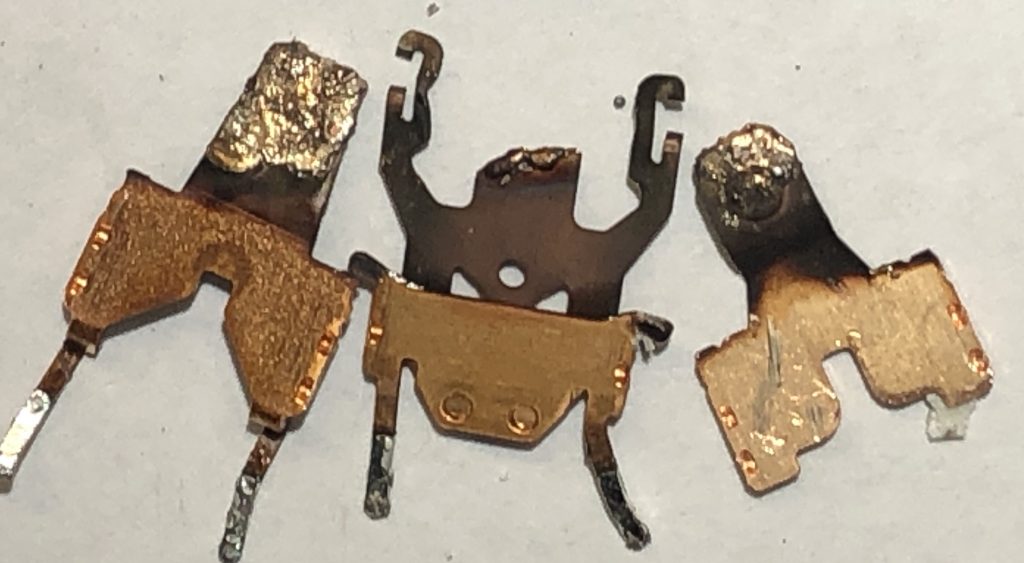
the relay is a Power PCB Relay RZH 105°C 16A 1 form A (NO) contact relay from TE connectivity. here is the datasheet for this relay. the manufacturer’s part number is 6-1415899-6 and the part number from digikey is 6-1415899-6-SI-ND. the actual description on the relay itself is RZHH-1A4-D012.
something caused this board to blow – some sort of voltage spike of some sort. but what if it is something internal that cause the relay to burn out. sometimes, a cheaper repair solution may be the better alternative to purchasing an expensive replacement board only to have it blow again as soon as it’s installed and power applied… if the relay blows again, we can look up the chain to see what blew it and then solve that problem and replace the relay once more. usually i would think that the power surge came from improper grounding and possibly a lightning strike. if you have any stories to add about your theories on why this may have blown, i invite you to contribute in the comments below.
all finished! ready to install this control board back into the oven.
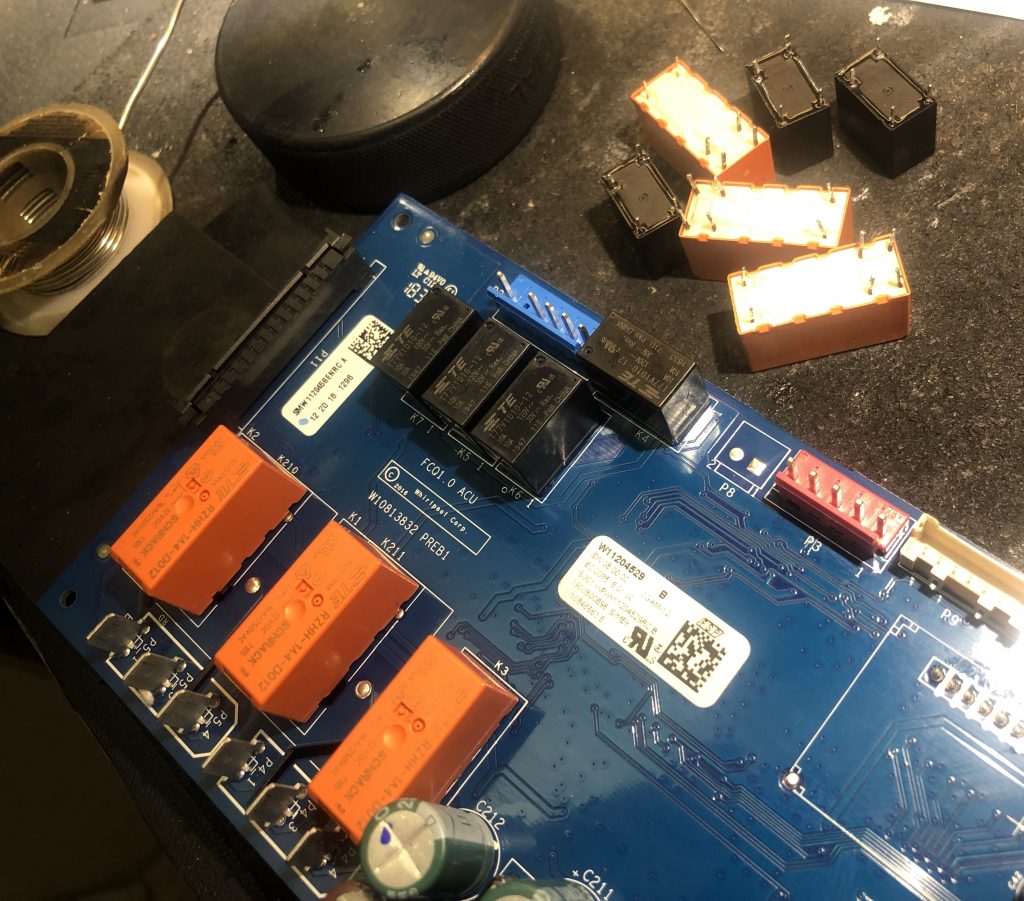
if you have a device that may need some attention, please contact me here. and thanks for riding along is this mr. fxr repair journey!
Notifications
Hi,
I’m having a tough time finding these relays, I can only find the 85C not the 105C, Have you found an alternative?
it’s been a minute on this repair, but i would think the 85c would work just fine – would not be as robust as the higher temp, but may not have been needed. could be the reason you can’t find the higher rating.
This board in the Whirlpool range appears to be notorious for failing. So much so that it take months to get one delivered once ordered. I am on my third board and will be trouble shooting this board. Thank you for the great detailed information. I will be checking the relays first, seeing that I hear a rattle when I shake the board. I will keep you posted if I determine there is some other failures. Thank you again for the information you provided.
so glad the post was of some help – thanks for the feedback.
havent had any luck finding a schematic to see which relays are what, how did you find info on finding the correct relays???
did not look for a schematic – the relay has the information printed on it to identify. it’s just a good first step to look at – “low hanging fruit”.